Welcome to this guide on how to visit Svalbard, based on my firsthand knowledge and expertise in travelling to Svalbard over 20 times.
As you plan your travel to Svalbard, this in-depth guide covers:
- Why Visit Svalbard
- How to get to Svalbard
- When to Visit Svalbard
- Things to do
- Places to stay and eat
- My top advice for travelling in Svalbard
Why Visit Svalbard
Let’s go exploring!
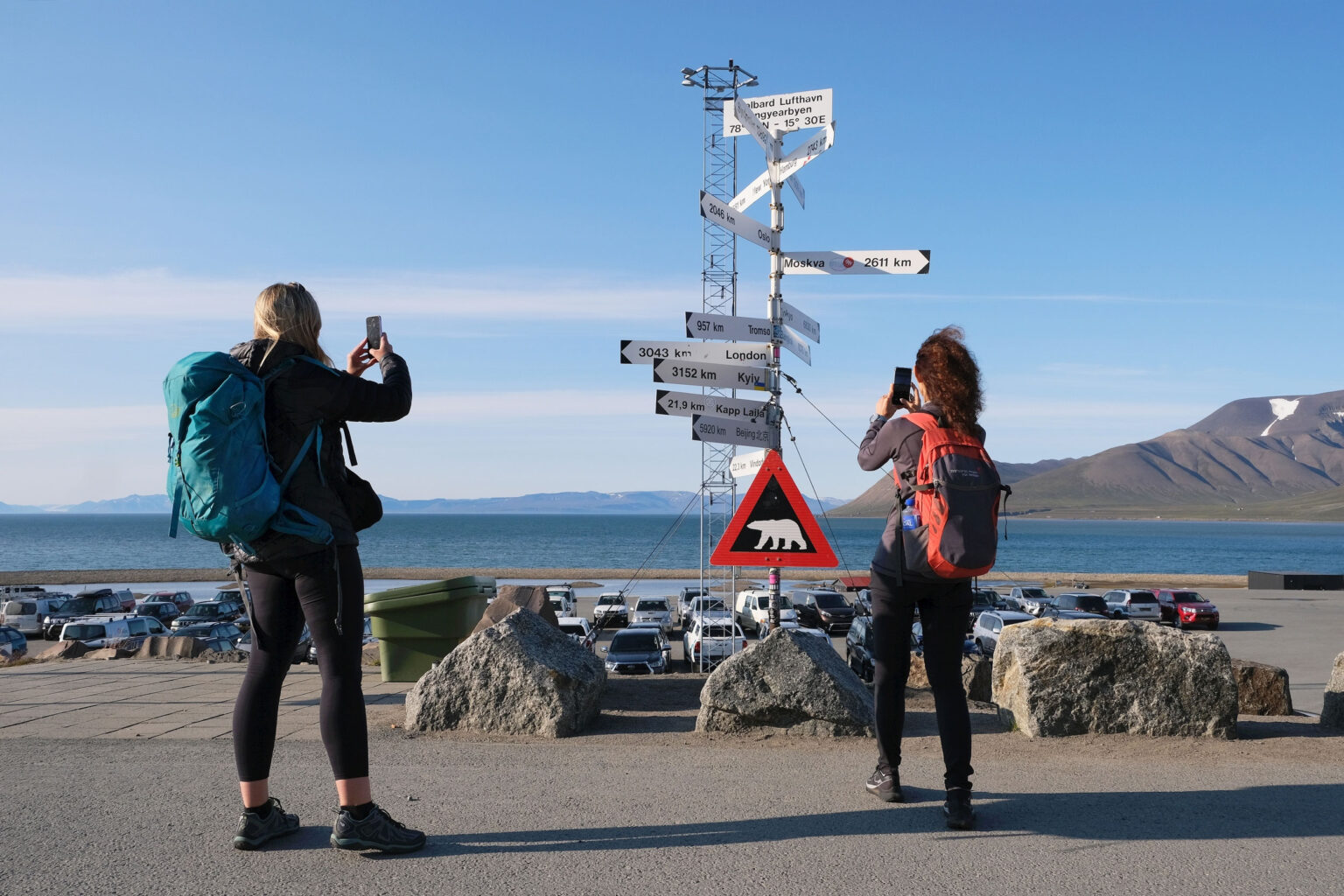
Table Of Contents
First, here is a quick overview of visiting Svalbard:
- The Svalbard archipelago is one of the most northerly places on Earth with a permanent human inhabitation located halfway between mainland Norway and the North Pole.
- It’s home to some of the most serene polar wilderness on Earth, high above the Arctic Circle. Over 2,000 polar bears call it home along with Arctic foxes, Walruses, Svalbard reindeer and a wealth of birdlife.
- It’s easy to reach and accessible to travellers, given its remote location, thanks to frequent flight connections from Oslo and Tromso in Norway.
- Travel in Svalbard is divided into three distinct seasons (The polar summer, northern lights winter and the sunny winter), and it is possible to visit all year round.
- During the summer, an expedition cruise is the best way to explore Svalbard and experience polar bear sightings, as well as a diverse array of wildlife.
Why Visit Svalbard?
Svalbard has attracted curious travellers for well over a century. What drew me to exploring Svalbard initially was the wildlife and how far north it is (Svalbard is located over 500 miles north of the Arctic Circle). Today, I still get excited about seeing polar bears in the pristine polar wilderness, and it’s a feeling that is hard to beat. Whilst the wildlife is a significant attraction, Svalbard also has a lot more to offer. Here are my top reasons to visit Svalbard:
- Svalbard offers the chance to see polar bears in their natural home. The islands are rich in wildlife, including walruses, Arctic foxes and Svalbard reindeer. An expedition cruise is the best option for summer wildlife watching.
- The polar scenery in Svalbard is jaw-dropping. Svalbard has over 2,000 glaciers, scenic fjords, and spiky mountains, from which the name Spitsbergen originates.
- The islands are rich in history, dating back to their discovery in 1596. Throughout the archipelago, remnants of whaling stations and early explorers can be found.
- Visit Longyearbyen, the most northerly town on Earth. During the winter, it’s perfect for viewing the northern lights or experiencing the midnight sun during the summer.
- Svalbard is ideal for a range of adventure activities, including dog sledging, snowmobiling, skiing, hiking, ice caving, and kayaking.
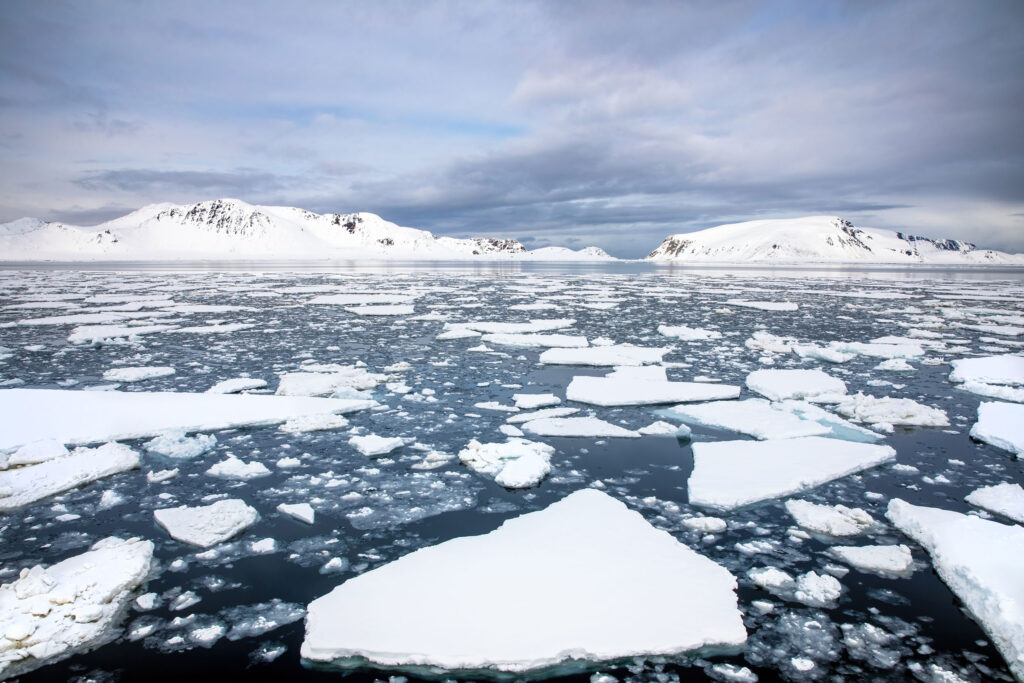
When to Visit Svalbard: How To Choose Your Season
Svalbard is a highly seasonal travel destination, offering distinct activities in both summer and winter. Winter activities such as dog sledging and snowmobiling take place in the cooler months when there is good snow cover. Expedition cruising, boat tours, kayaking and hiking take place during the warmer summer months when the sea ice and snow recede.
Travel in Svalbard is divided into three main seasons: the Polar Summer, the Northern Lights Winter, and the Sunny Winter. Choosing which month to visit Svalbard comes down to what you would like to see and the activities you would like to do.
Top Tip: If you haven’t been to Svalbard before, I highly recommend visiting during the polar summer. The wildlife is most active, making it the best time to see polar bears. Consider a Svalbard cruise if wildlife watching is your priority.
For a month-by-month guide with temperatures and what to expect, please see my article, ‘Best Time to Visit Svalbard‘.
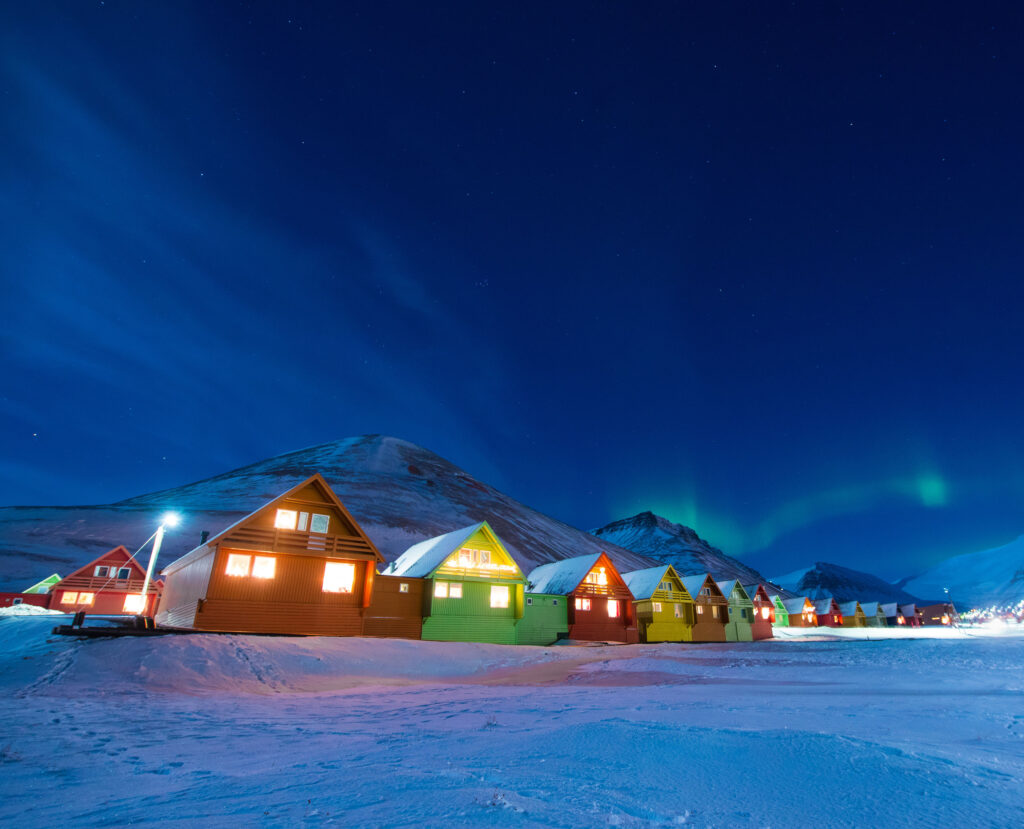
How to Get To Svalbard
There are two ways to get to Svalbard:
- Fly to Longyearbyen from Tromso or Oslo in Norway.
- Sail to Svalbard on an expedition cruise.
The easiest way to get to Svalbard is to fly to Svalbard Airport from Oslo or Tromsø in Norway. Most travellers choose this option and join their expedition cruise in Svalbard.
The other option is to sail to Svalbard on an expedition cruise. Cruises depart from Scotland, Iceland, and mainland Norway, and often operate at the start or end of the season. There is no ferry connecting mainland Norway with Svalbard.
SAS and Norwegian Airlines operate direct flights to Svalbard, with a daily schedule during the peak summer months and reduced frequency during the winter. The flight from Oslo to Longyearbyen takes approximately three hours. The flight from Tromsø to Longyearbyen takes about one and a half hours. Remember to book ahead, as flights tend to fill up quickly in advance.
There are currently no international scheduled flights to Svalbard. If you are travelling from outside Norway, you must first fly to Oslo or Tromsø and take a connecting flight. Some charter flights included with our Svalbard cruises fly directly to Longyearbyen from Helsinki, Paris, or Oslo.
Polar Escapes offer the option to fly to Svalbard and join a cruise or sail to Svalbard across the Arctic Ocean for an authentic nautical adventure.
Arriving In Svalbard
Arriving in Svalbard is straightforward. Svalbard Airport is located a short distance of 3.1 miles (5km) from Longyearbyen.
The easiest way to get into town is to take the airport shuttle bus, which connects to all the hotels in Longyearbyen and meets every arriving flight. The cost is 110 NOK for an adult one way, and payment can be made by card onboard. It takes around 15 minutes, depending on which hotel you are staying at.
It is also possible to take a taxi. There is a taxi stand outside the airport, and the ride into town costs from 250 NOK.
Please note that it is not possible to walk from the airport into Longyearbyen as it is outside the safety zone for polar bears. To find out more, see my Svalbard Airport Guide for detailed arrivals and departure information.
If you arrive or depart from Longyearbyen harbour on a ship, the harbour is a short walk from the town centre, and it is possible to walk.
How To Travel Around Svalbard
Travelling in Svalbard is quite different from other destinations in the polar regions. Outside of Longyearbyen, there are no roads, and it is pure, blissful nature and wilderness. You can’t wander off to the landscape outside of Longyearbyen on your own due to the threat from polar bears and the Arctic climate without suitable experience and protection.
Instead, you must join guided tours or an expedition cruise led by professional guide teams that are there for your safety and carry polar bear protection.
There are two main travel options in Svalbard:
- Stay in Longyearbyen at a hotel or guest accommodation and join day trips, such as guided hikes, kayaking (in summer), or snowmobiling and dog sledging (in winter).
- Join a multi-day Svalbard cruise on an expedition ship and sail around the archipelago during the summer. Polar Escapes offers a large selection of Svalbard cruises.
The first time I visited Svalbard, I combined a stay with a cruise. I stayed for three nights in a hotel in Longyearbyen and took day tours, including dog sledging, kayaking, and a guided hike. I then joined a 10-day Svalbard cruise. Combining a cruise and a stay in Longyearbyen is the best of both worlds if you have the time, as it allows you to experience the wilderness of the archipelago and the area close to Longyearbyen.
How Do I See Polar Bears In Svalbard?
For those interested in seeing wildlife, the best way to encounter polar bears during the summer is on a multi-day expedition cruise to Svalbard. There are no official polar bear tours. As much of Svalbard is an uninhabited wilderness, expedition cruises are my preferred way of seeing what Svalbard has to offer. Expedition ships are equipped with an expedition team and inflatable zodiac boats, which are used for wildlife cruises. Alongside polar bears its possible to see whales, walruses, birds including Guiellimots and Arctic terns, and Svalbard reindeer on the tundra.
You are unlikely to see much wildlife on a land-based tour. The other option is to join a day boat tour from Longyearbyen, but the chances of seeing a polar bear are low on these tours.
For a complete guide and to learn about the latest regulations, please see my article How to see polar bears in Svalbard.
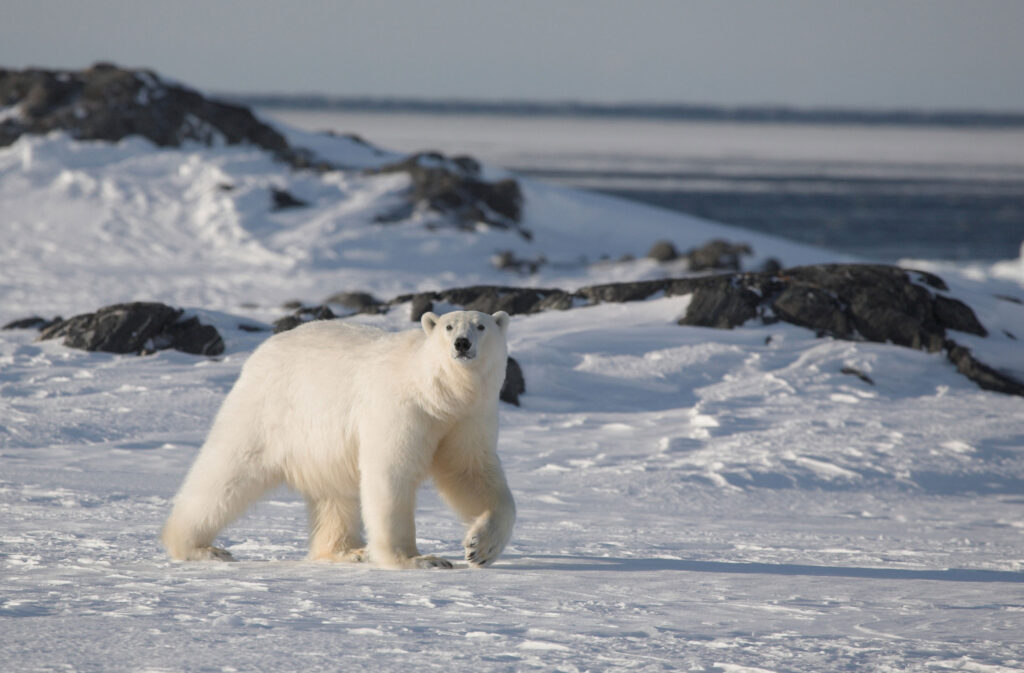
Things To Do In Svalbard
In Svalbard, you are spoilt for choice when it comes to outdoor activities. The types of activities offered and things to do vary throughout the year, depending on the weather and lighting conditions. The seasons in Svalbard dictate everything. For example, don’t expect to see the Northern Lights during the summer, when the midnight sun is visible for 24 hours a day.
Here are some of the top activities:
Polar Summer Activities
- A multi-day cruise
- Kayaking tour
- Hiking tour
- Dog Sledding on wheels (after May)
- ATV tour
- Mountain biking
- Boat tours
Winter Activities
- Dog Sledding
- Ice cave tour
- Snowmobile expedition
- Skiing
- Hiking expeditions
- Northern lights viewing during the polar night
For a detailed guide to the activities listed and to discover more, please see my article 35 Best Things To Do In Svalbard and Longyearbyen.
Where To Stay In Svalbard
Longyearbyen is the main settlement in Svalbard and serves as the central hub for tourists. The majority of hotels and accommodations are located in Longyearbyen, except for the Isfjord Radio wilderness hotel and the hotels in Pyramiden and Barentsburg.
Longyearbyen offers a surprisingly diverse range of hotels, from luxury to upmarket, and budget guesthouses to choose from. Here are places I have personally stayed and would highly recommend:
A 4-star luxury hotel in the centre of Longyearbyen, close to the harbour, complete with sauna and outdoor whirlpool. This option offers the highest standard (with the highest cost per night) and features the fabulous Nansen restaurant, serving Nordic cuisine.
A boutique hotel with a lot of atmosphere, situated in the centre of Longyearbyen. The lobby features an open fireplace, blending modern aesthetics with the theme of exploration.
The Vault is a relatively new development located near the town centre. I found the quality of the rooms to be exceptionally high. It has a modern design inspired by the concept of the Svalbard Global Seed Vault. There is an excellent sushi and noodle restaurant beneath it.
If you are looking for an authentic experience, then the Basecamp hotel is for you. Each room is decorated in the style of a traditional trapper cabin, featuring classic wood accents.
The most quirky guesthouse in Longyearbyen, with lots of atmosphere. Built from a former coal miner’s accommodation, it has a rustic feel. If you don’t mind sharing a bathroom, it’s a great option, located not far from the town centre.
Coal Miners Cabins
An excellent budget option with shared facilities, the coal miners’ cabins are situated about a 20-minute walk from Longyearbyen town centre in Nybyen.
For a comprehensive list of Svalbard hotels and accommodation, see the Visit Svalbard website.
Exploring Longyearbyen
Longyearbyen has a frontier-town feel about it. The former mining town is now a mix of hotels, restaurants, a pub, a few shops, and two museums nestled in a steep-sided valley with dramatic scenery.
Longyearbyen has a designated safe zone from polar bears, allowing residents and visitors to walk around the town freely without the need for a firearm or protection. The town limits are clearly signposted.
Longyearbyen is an excellent base for day tours in the surrounding area or as an overnight stop before embarking on a Svalbard cruise. It’s worth bearing in mind there are no pubic transport options in Longyearbyen apart from the taxi service and the airport shuttle bus, so exploring is done on foot.
I highly recommend visiting the North Pole Expedition Museum and the Svalbard Museum, located close to the town centre, before embarking on your cruise. Each museum gives a great account of the history of the Svalbard islands. They are a great place to start your adventure with tales of great polar endeavours and achievements.
A favourite spot of mine is the Husky Cafe, where you can grab a coffee and meet real-life husky dogs that lounge around the cafe. The Svalbard Brewery is also worth a visit to see how they make beer with 2,000-year-old glacier water.
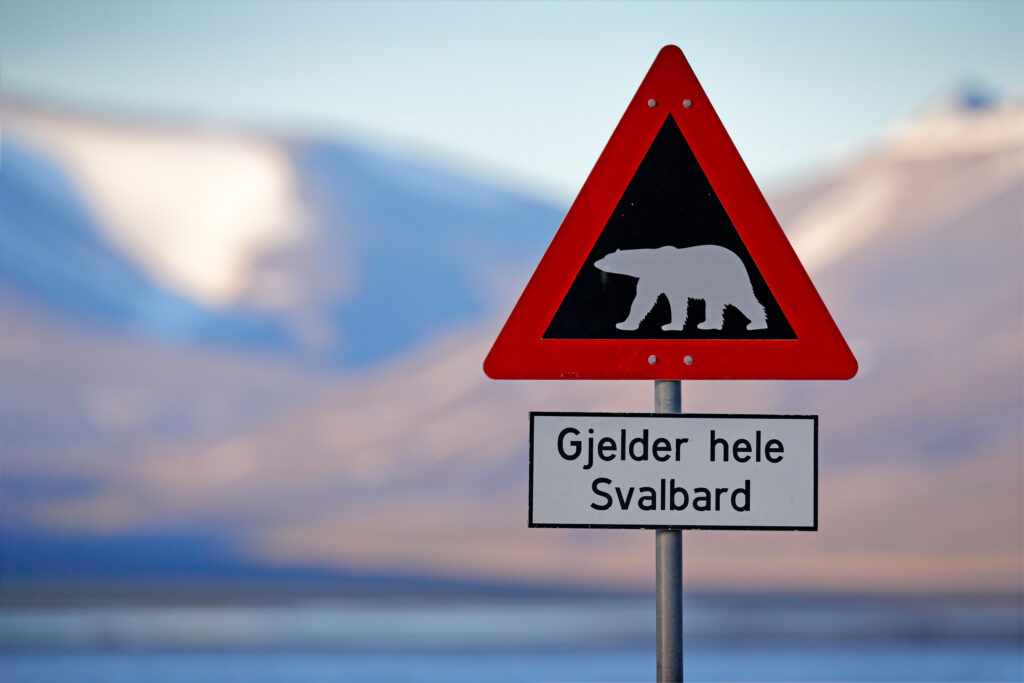
Svalbard Resturants
Considering its remoteness, Longyearbyen has an excellent range of restaurants and places to eat, which I have tried and tested many times. Here are my top recommendations:
Huset offers fine dining experiences with a 14-course tasting menu inspired by the Arctic region. Not everyone can say they have dined in the most northerly gourmet restaurant on Earth.
Kroa is a personal favourite of mine. Located at the Basecamp hotel, the cosy interior harks back to the days of hunters and trappers in Longyearbyen. The food is hearty, making it an ideal spot for a meal after a day spent outdoors.
Nuga Sushi is the world’s northernmost sushi restaurant. Located at the Svalbard Vault Hotel, Nuga serves a range of sushiu and noodle dishes. I have found the food here to be consistently excellent.
Svalbar is a relaxed bar with a good atmosphere in the centre of Longyearbyen, offering excellent burgers and drinks.
Vinterhaugen Restaurant, located at Mary Ann’s, is situated in a greenhouse filled with plants, making it a welcome sight against the treeless Arctic backdrop. The cuisine is inspired by the Arctic and features a range of dishes, from seal to reindeer.
For a complete guide to Svalbard’s restaurants, please see.
Travel Safety In The High Arctic
The easiest way to travel outside of Longyearbyen is on a guided tour or cruise. Solo travel is not advised, and all visitors leaving Longyearbyen should be accompanied by a professional local guide.
If you leave the town of Longyearbyen, you must have a guide with you who is carrying the necessary safety equipment and a rifle to deter polar bears.
You must dress appropriately, especially during the winter when temperatures are well below freezing. When you join a tour or cruise, a detailed packing list will be provided to help you come prepared.
If you plan to travel solo, it’s highly advisable to have experience travelling in the High Arctic. In Svalbard, you must follow local safety protocols and notify the local authorities, specifically the governor’s office. You will need to carry equipment to scare off polar bears, including a rifle and a flare gun. You must also have safety equipment, including an emergency beacon, compass, and map.
There is a risk of rabies in the Arctic, which Arctic foxes and Svalbard reindeer can carry. Never touch an animal.
For more information, please see the Svalbard safety section.
Travelling Responsibly
It’s essential to be mindful when visiting Svalbard, as this is a fragile place with different rules.
- It’s an offence to disturb wildlife, including pursuing polar bears.
- The new Svalbard environmental act for 2025 states that you must not go within 500 metres of a polar bear to minimise disturbance. Bring binoculars to make the most out of sightings.
- Do not drop litter and leave no trace.
- Do not pick flowers or take any stones or artefacts with you.
- Consider carbon offsetting your emissions. The Arctic is one of the fastest-warming places on the planet.
For more information, AECO has a perfect set of visitor guidelines.
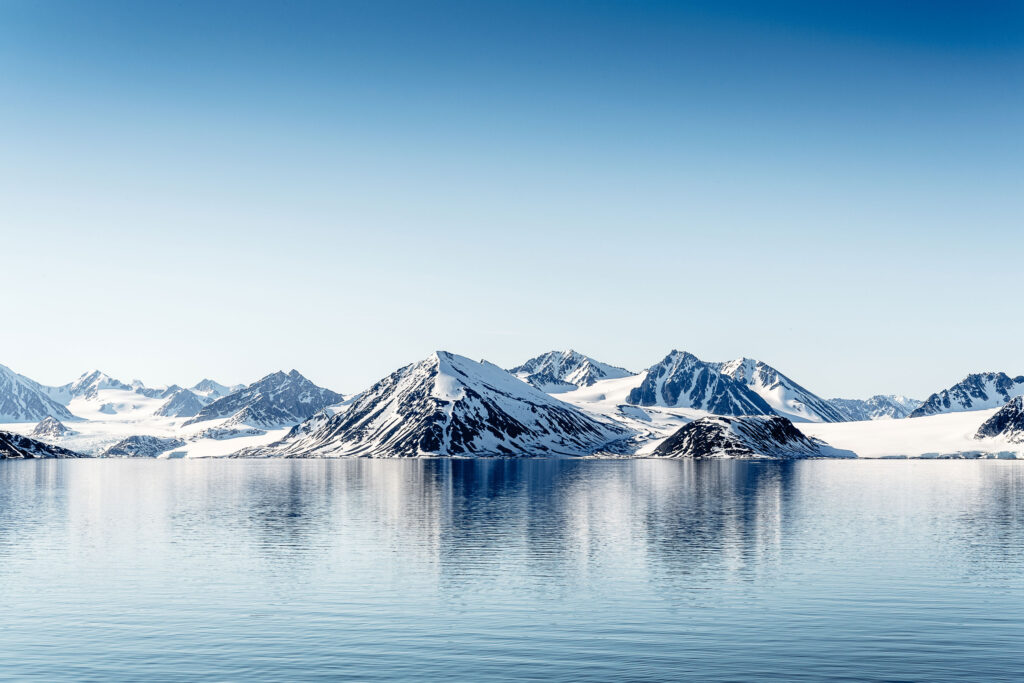
What To Pack
What you need for your Svalbard trip will depend on the time of year you are visiting. During the winter months, you will require more layers than during the warmer summer months. Here are my recommendations:
- Parka jacket (winter months only)
- Outer windproof and rainproof jacket
- Waterproof trousers (if you are joining an expedition cruise)
- Waterproof boots (often supplied by the tour operator)
- Warm, insulated layers that can be taken off and added as required
- A warm hat
- Waterproof gloves
- Neck warmer
- Sunglasses
- Sunscreen
- Comfortable socks
Most cruises will supply an outer jacket and the loan of a pair of waterproof boots as part of your expedition. A complete packing list will be provided at the time of your reservation.
Budgeting and Costs
Svalbard is considered an expensive destination in comparison to the rest of Europe. Prices are similar to those in mainland Norway. Whilst Svalbard doesn’t have any VAT, the added remoteness increases the transportation costs of food.
Here is what to expect:
- Hotel room for two people – 3000 NOK per night
- Budget guest house for two people – 1000 – 1900 NOK per night
- Dinner – 250 – 600 NOK per person
- Half a day kayaking tour – 1365 NOK
- 2 Day snowmobile tour – 18500 NOK
- Svalbard expedition cruise – From $7,000 per person
Know Before You Go
Language
The official language of Svalbard is Norwegian; however, English is also widely spoken. Most tours and expedition cruises take place in English.
Currency
The currency of Svalbard is the Norwegian Krone. There are no banks or ATMS, so any cash must be taken with you. Card payments are widely accepted.
Visas
You do not require a visa to travel to Svalbard as it is a visa-free zone, meaning anyone can live, work and travel there. When travelling to Svalbard, you will likely pass through Norway, which is part of the Schengen Area. You may require a visa to enter Norway if you are travelling from a non-Schengen country. For more information, please see Svalbard Visas.
Passport
Please remember to bring a valid passport, as it will be required for entry into Svalbard. Passport control takes place on mainland Norway before flying to Svalbard.
Population
The population of Svalbard is 2,936 people, with the majority residing in Longyearbyen. The rest of the population is spread between the research town of Ny-Ålesund and the Russian settlements of Barentsburg and Pyramiden.
Governance
Svalbard is governed by Norway under the Svalbard Treaty, dating back to 1920. The Governor of Svalbard is the appointed representative responsible for administrative duties.
My Top Svalbard Travel Tips
- Choose the time of year for your visit based on what you would like to see. Summer is the best time for wildlife watching.
- During the peak season, flights and cruises often sell out, so booking months in advance is crucial.
- I highly recommend a Svalbard expedition cruise as the best way to encounter wildlife and polar bears.
- Please remember to remove your shoes upon entry to your hotel in Longyearbyen. It’s a local custom that dates back to the days of mining.
- Take cash with you as there are no ATMs in Svalbard.
- Travel to Svalbard responsibly and follow the local advice and rules to ensure your visit has a minimal impact.
Travel To Svalbard With Polar Escapes
At Polar Escapes, we specialise in Svalbard cruises during the warmer months. If you want to visit off the beaten track places such as the 4th of July Glacier or the bird mountain an expedition cruise offers the only way to experience the main three islands of the archipelago.
We compare itineraries, ships, and prices from multiple polar expedition cruise operators — so you get the best price, guaranteed. All bookings are covered by 100% financial protection for peace of mind.
See our Svalbard cruises to find out more.
Most emails are boring.
Ours are cool.




